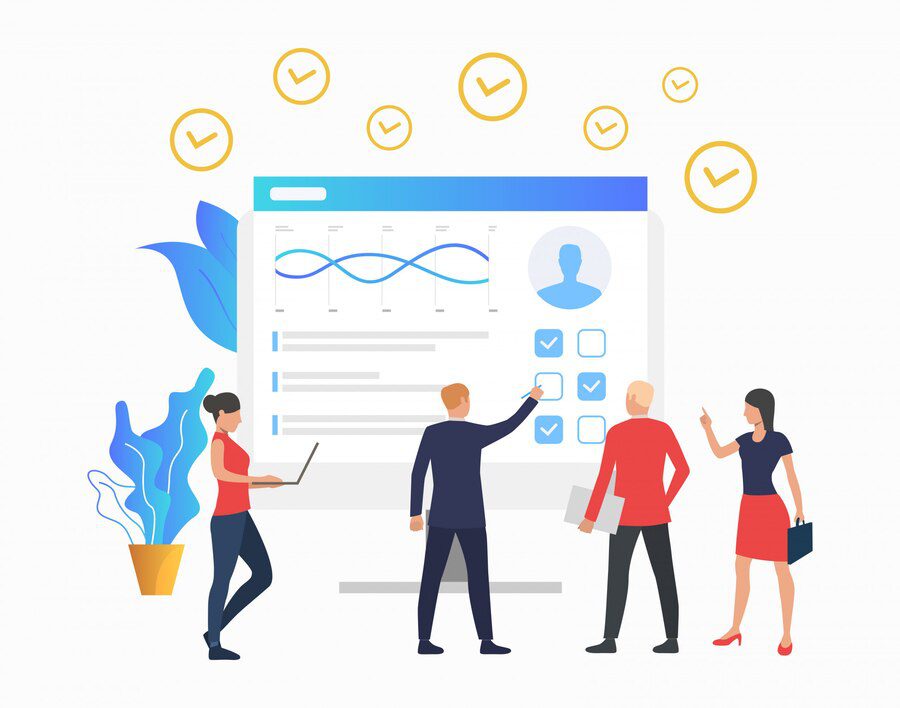Why Website Design Matters for User Retention
A well-crafted website design is the cornerstone of user retention. In today’s competitive digital landscape, an appealing, intuitive, and functional website determines whether visitors stay and engage or bounce within seconds. User experience (UX) and user interface (UI) play critical roles in ensuring visitors return, interact, and ultimately convert into loyal customers.
Table of Contents
Key Elements of Website Design That Improve User Retention
1. Responsive and Mobile-Friendly Design
With over 60% of web traffic coming from mobile devices, a responsive design is non-negotiable. Websites must adapt seamlessly to different screen sizes, ensuring:
- Fast-loading pages
- Touch-friendly navigation
- Consistent design across devices
A mobile-first approach guarantees that users don’t abandon the site due to a poor browsing experience.
2. Intuitive Navigation and Site Structure

A clear, logical, and user-friendly site structure enhances usability and engagement. Best practices include:
- Sticky navigation bars for quick access to important pages
- Breadcrumb navigation to help users track their location
- Search functionality to allow quick information retrieval
Well-organized menus and intuitive call-to-action (CTA) buttons guide visitors smoothly through the website.
3. Fast Loading Speed and Performance Optimization
A slow-loading website is one of the main reasons for high bounce rates. To ensure optimal performance:
- Compress images and videos without compromising quality
- Minimize HTTP requests and use browser caching
- Enable content delivery networks (CDNs) for faster load times
Google’s PageSpeed Insights recommends a loading time of under 2 seconds for the best retention rates.
4. Engaging and High-Quality Content
Content must be relevant, valuable, and engaging to keep users interested. Effective content strategies include:
- Well-structured blog posts with actionable insights
- Interactive elements like quizzes, infographics, and polls
- Videos and animations to make content more engaging
A strong internal linking strategy keeps users exploring multiple pages, increasing retention time.
5. Clear and Effective Call-to-Actions (CTAs)
Strategically placed CTAs drive user engagement and conversions. Best practices for CTAs include:
- Contrasting colors to make them stand out
- Action-oriented text like “Download Now,” “Get Started,” or “Subscribe Today”
- Strategic placement above the fold and at key touchpoints
Well-designed CTAs enhance user journey flow and encourage meaningful interactions.
6. Personalization and User Engagement
Personalization enhances user experience by tailoring content based on visitor behavior and preferences. Methods include:
- Dynamic content based on user history
- AI-powered chatbots for real-time assistance
- Personalized product recommendations
Offering customized experiences fosters long-term user retention and brand loyalty.
7. Trust Signals and Security Measures
Users must feel safe while browsing and sharing information. Essential trust signals include:
- SSL certificates for encrypted connections
- Customer testimonials and reviews to build credibility
- Clear privacy policies and contact details
A secure, trustworthy website ensures user confidence and long-term engagement.
8. Accessibility and Inclusivity
An inclusive website design ensures usability for all visitors, including those with disabilities. Key considerations include:
- Alt text for images to aid visually impaired users
- Keyboard navigation support for accessibility
- Readable fonts and high-contrast color schemes
Web accessibility improves usability and enhances SEO rankings simultaneously.
9. Social Proof and Community Engagement
Social proof encourages user engagement and trust. Key elements include:
- Customer testimonials and user-generated content
- Live social media feeds integrated into the website
- Community forums and discussion boards
A strong online community keeps users engaged and invested in your brand.
10. Continuous A/B Testing and Optimization
Regular testing and optimization improve user retention. Effective techniques include:
- Heatmap analysis to track user behavior
- A/B testing different design elements
- Analyzing user feedback for improvements
By refining elements based on data-driven insights, you ensure an optimized user experience.
Final Thoughts
A well-designed website is essential for user retention, engagement, and conversions. By prioritizing mobile responsiveness, fast load times, intuitive navigation, engaging content, and personalization, businesses can keep visitors coming back. Implementing these strategies enhances customer experience, improves SEO rankings, and increases revenue.



